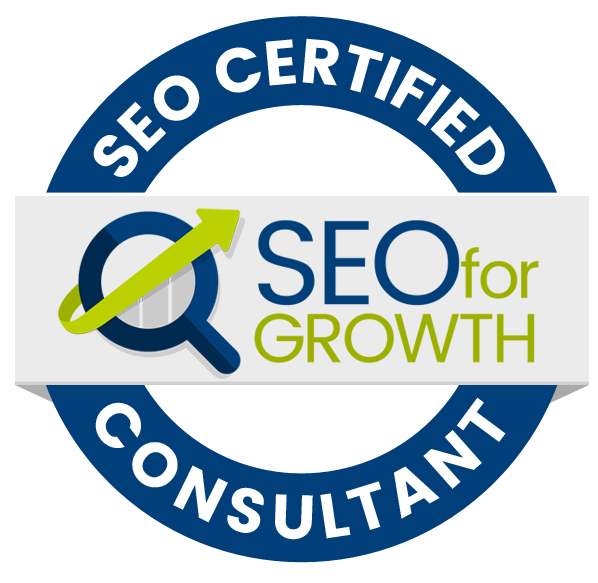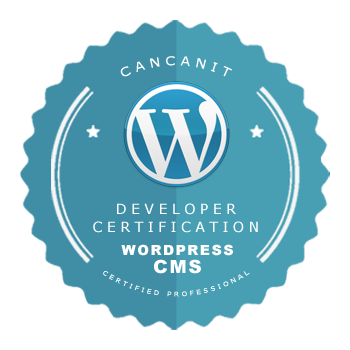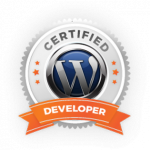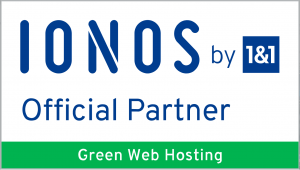
Website and Brand development is indeed a highly complex process. Here is an overview of the process. ZenMedia will be with you every step of the way so that your website and branding project will be Engaging, Purposeful, and creative.
We got your back!
Brand Development
Great branding will improve the recognition of your product to your customers and clients. Branding is key to website development and should reflect the principles of your company.
A 10-Step Brand Development Strategy
CONSIDER YOUR OVERALL BUSINESS STRATEGY. A robust and well-developed brand will make growing your business much more straightforward. But what type of enterprise do you want? Are you planning to grow organically? Your overall business strategy is the context for your brand development strategy, so that’s the place to start. If you are clear about where you want to take your business, your brand will help you get there.
IDENTIFY YOUR TARGET CLIENTS and Customers.
Who are your target clients and Customer? If you say “everybody,” you are making a huge mistake. Our research clearly shows that high growth, high-profit firms are focused on having clearly defined target clients. The narrower the focus, the faster the growth. The more diverse the target audience, the more diluted your marketing efforts. So how do you know if you have chosen the right target client group? That’s where the next step comes in.
RESEARCH YOUR TARGET CLIENT GROUP
Enterprises that research their target client group grow faster and are more profitable (see figure below). Further, those that do research more frequently (at least once per quarter) grow faster still.
Research helps you understand your target client’s perspective and priorities, anticipate their needs, and put your message in language that resonates with them. It also tells you how they view your firm’s strengths and your current brand. As such, it dramatically lowers the marketing risk associated with brand development.
DEVELOP YOUR BRAND POSITIONING
You are now ready to determine your enterprise’s brand positioning within the professional services marketplace (also called market positioning). How is your firm different from others, and why should potential clients and customers within your target audience choose to work with you?
A positioning statement is typically three to five sentences in length and captures the essence of your brand positioning. It must be grounded in reality, as you will have to deliver on what you promise. It must also be aspirational, so you have something to strive for.
DEVELOP YOUR MESSAGING STRATEGY
Your next step is a messaging strategy that translates your brand positioning into messages to your various target audiences. Your target audiences typically include potential clients and customers, potential employees, referral sources or other influencers, and potential partnering opportunities, among the usual suspects.
While your core brand positioning must be the same for all audiences, each audience will be interested in different aspects of it. The messages to each audience will emphasize the most relevant points. Each audience will also have specific concerns that must be addressed, and each will need different types of evidence to support your messages. Finally, your messaging strategy should address all of these needs. This messaging strategy is essential in making your brand relevant to your target audiences.
DEVELOP YOUR NAME, LOGO, AND TAGLINE.
For many firms, a name change is not necessary. But if you are a new firm, are undergoing a merger, or are burdened with a name that no longer suits your positioning, a name change may be in order. So even if you don’t change your firm name, a new logo and tagline may make sense to better support your brand positioning.
Remember, your name, logo, and tagline are not your brand. They are a part of your brand identity, the ways to communicate or symbolize your brand. You must live it to make it real.
And don’t make the mistake of showing the new logo around internally to get a consensus. The name, logo, and tagline are not for you. Instead, they are for your marketplace and should be judged on how well they communicate, not how the partners like them.
DEVELOP YOUR CONTENT MARKETING STRATEGY
We could have called this step “develop your marketing strategy.” But we didn’t. Instead, we call for a content marketing strategy.
Why? Content marketing is particularly well suited to professional services firms in the Internet age. It does everything traditional marketing does, but it does them more efficiently. It uses valuable educational content to attract, nurture and qualify prospects.
Remember that your brand strength is driven by both reputation and visibility. Increasing visibility alone without strengthening your reputation is rarely successful. That’s why traditional “awareness-building” advertising or sponsorships often yields disappointing results. But on the other hand, content marketing increases both visibility and reputation simultaneously. It is also the perfect way to make your brand relevant to your target audiences.
DEVELOP YOUR WEBSITE
Your website is your single most important brand development tool. It is the place where all your audiences turn to learn what you do, how you do it, and who your clients are. Prospective clients are not likely to choose your firm solely based on your website. But they may well rule you out if your site sends the wrong message.
Further, your website will be home to your valuable content. That content will become the focus of your search engine optimization (SEO) efforts so that your prospects, potential employees, and referral sources will find you and learn about your firm. Online content is central to any modern brand development strategy.
These days, professional services websites come in two varieties. The first is a branding site. Such a site tells your story and conveys who you are, who you serve, and what you do. In short, it conveys your brand message. The other variety does the above and also generates and nurtures potential new clients. We call these High-Performance Websites.
BUILD YOUR MARKETING TOOLKIT
The next step is to build out the remainder of your marketing toolkit. This toolkit might include one-page “sales sheets” describing core services offerings or key markets. In addition, there may be a brief “pitch deck” that overviews the firm or key offerings and an e-brochure about the firm. E-brochures are rarely printed anymore.
Increasingly this marketing toolkit also includes videos. Popular video topics include firm overviews, case studies, or “meet the partner” videos. Key services offerings are also beneficial. If prepared appropriately, these tools serve not only a business development function but also are essential for brand development.
IMPLEMENT, TRACK, AND ADJUST
This final step in the brand development process may be one of the most important. A winning brand development strategy doesn’t do much good if never implemented. You might be surprised at how often that happens. A solid plan is developed and started with all the good intentions the firm can muster. Then reality intervenes. People get busy with client work, and brand development tasks get put off… then forgotten.
That’s why tracking is so important. We strongly recommend tracking both the implementation of the plan and the results. Did the strategy get implemented as planned? What happened with the objective measures, such as search traffic and web visitors? How many new leads, employee applications, and partnering opportunities were generated? You can only make sure you draw the correct conclusions and make suitable adjustments by tracking the entire process.
There you have it — a 10-step brand development process to drive the growth and profitability of your project.
We believe in unique content for your branding and website. To help with that we offer Photography, Videography as well as Logos to support your vision and your branding.
Website Development
At ZenMedia, we work closely with our clients to develop Engaging, Purposeful, and Creative websites. Our goal is to help our clients with the tools they need to succeed in reaching their goals.
From simple one-page websites to complex E-Commerce portals, ZenMedia can do it.
Whether you are a freelance photographer, own a hardware store, or have another type of small business, a great website is essential for your company’s success.
If you want to build a new startup website or make your current site more effective, here are ten critical steps to getting started and helping your small business website compete effectively in the online marketplace.
Obtain a good domain name.
Your domain name, also known as your website address, is often the entry point to your site. However, it must make a good impression for usability purposes and search engine optimization (SEO).
Here are some tips for coming up with an optimal domain name:
- Make it easy to spell. Try not to use slang, made-up, or extremely esoteric words.
- Keep it as short as possible. The shorter it is, the easier it is to remember and type correctly.
- Avoid numbers and hyphens. They are difficult to remember and less elegant and memorable than word-only domain names, and may be misunderstood when vocalizing the domain name.
- Make the address broad to facilitate future growth. For example, Amazon.com is a much broader website address than BooksOnline.com and allows Amazon to sell pretty much every consumer good instead of books only, as was its original purpose.
- Ensure it is memorable. With so many websites on the internet, your website name must be catchy so people will remember how to access it in the future.
- Research the domain name. Google it to see if a similar website address already exists online, and search on USPTO.gov to ensure it does not contain any registered trademarks.
- Create an SEO-friendly URL. When appropriate, try to develop an SEO-friendly website address that includes keywords and geo-location; for example, “www.LasVegasElectrician.com.”
Purchase secure, scalable website hosting with good tech support
A website host (sometimes referred to as a website hosting provider) is a company that offers the technology and services necessary for a website to be viewed on the internet. You connect your domain name to your hosting provider so that when users visit your website address, they are shown your website that you store on your hosting account.
Hosting services can cost anywhere between $2 to $100+ per month, depending on the technology and support you choose. You can usually get a discount if you purchase a yearly plan instead of a monthly plan.
Here are some guidelines for choosing a good website hosting plan
I typically recommend a “virtual private server” (VPS) hosting plan, which offers the best of both worlds. The cost ranges from around $20 to $50 per month, which is affordable for the hosting services you will receive. A VPS is one machine that is partitioned to act like multiple machines, which gives it similar affordability to shared hosting, with similar security and performance potential as a dedicated server hosting plan.
- Make sure your hosting company has a phone and/or chat support so you can be helped quickly if you have a problem. Email support can often take too long and become frustrating when a problem needs to be resolved immediately. Phone support is best, but chatting works well, too.
- There needs to be an easy-to-use server interface like cPanel to access your server. You do not want to have to use terminal commands to view your server contents and make changes unless you can afford to hire a professional server administrator to help you.
- Check to see what kind of server security is in place on the server you consider. You will want to be able to access your server via Secure File Transfer Protocol (SFTP). There should be daily backups being made of your server contents. There should also be an easy, one or two-click method to install Secure Sockets Layer (SSL) certificates. Make sure the hosting company performs regular security maintenance. Ideally, your hosting company has a published security protocol you can review, so you know how they keep their servers safe.
Some popular website hosting companies include:
Prominently display a clear description of your business
It is essential to let people know who you are and what you do right away so they don’t feel confused when visiting your small business website. Make sure your main homepage banner (also known as a “hero image”) and subsequent banners are visual representations of your services. You also have an introductory text blurb near the top of the page that describes who you are and what you do.
Additionally, make sure your main and footer navigation menus have “About Us” page links easily accessible so people can click them and read more about your business in-depth.
Implement the best content management system
A content management system (CMS) is a software program or application used to create and manage digital content. A good CMS will help you maintain your site, and you don’t need much technical knowledge to use it.
WordPress: is the world’s most popular CMS. It has a vast, active support community and many useful plugins to extend the functionality of your site. (And if you cannot find a plugin that does what you want, it is easy to find a WordPress developer who can make one for you!) WordPress is also free and relatively simple to install. Most website developers are familiar with it, so it is not hard to find an individual or agency that can work on your site. Therefore, I usually recommend that small businesses use WordPress to create their websites due to its flexibility and extensibility. Choose a good e-commerce platform.
If you plan to sell goods and/or services through your website, you will need the right technology. (If you do not currently sell anything, you may want to consider doing so since e-commerce could potentially increase your profits.) If you decide to allow users to transact with you online financially, you must choose the right platform for your business model.
Here are some popular small business e-commerce platforms:
WooCommerce: is one of the world’s most popular e-commerce platforms—it can turn your WordPress website into an online store. Like WordPress, there are many plugins available, and it attaches to WordPress, which makes it highly flexible. There are many free and premium themes pre-built for WooCommerce. (As a rule, it is better to use a premium theme from a reputable developer because it will offer better security and support.) If you are not tech-savvy, you will most likely need a WordPress developer to help you set it up and use it. WooCommerce also offers a very high amount of capabilities and scalability that your small business might need.
Shopify: is a cloud-based e-commerce platform that allows you to create and customize an online store and manage products, inventory, payments, and shipping. It is not a WordPress extension like WooCommerce—it is a standalone platform hosted on the Shopify server—so if you have a main website, your e-commerce site would technically be separate from that. You can link to your Shopify account from your regular website built with WordPress with a Shopify integration plugin.
Features include unlimited products, unlimited bandwidth, fraud analysis, discount codes, reports, and much more. The key benefits of Shopify are that you do not need a developer to set up a store, and everything on the backend is already set up for you when you subscribe. The downside is you do not have as much control or flexibility over your store as you would with WooCommerce.
Shopify Plus: is Shopify, but with a higher level of customization, more staff accounts, and international e-commerce options. It also has a higher level of support. However, all of this comes with a higher subscription cost, and it still does not have all the flexibility and customization abilities as WooCommerce.
GoDaddy Online Store: GoDaddy has a relatively new e-commerce standalone subscription platform that is relatively easy to set up and use. Very little technical knowledge is required to launch your shop with GoDaddy Online Store. The templates are clean and straightforward and somewhat customizable. Features include marketing and SEO tools, social media integration, appointment booking, SSL security, rapid page loading, and more.
Create an enjoyable, memorable, and engaging website user interface
Make sure your small business website interface leaves a positive impression that drives results. You can do so by implementing the following suggestions:
- Use beautiful graphics and easy-to-read fonts.
- Make sure your graphics are compressed and optimized for fast loading. If your website is slow, search engines like Google will penalize your ranking.
- Research the competition to see how they have designed and optimized their websites; implement similar components that will work for your small business website.
- Research your target audience to see what they want from your site and make it easy for them to accomplish it.
- Stay consistently on-brand throughout your website design.
- Design an intuitive navigation system that allows users to get to the pages they need quickly.
- Publish easily accessible contact information.
- Incorporate prominent call-to-action (especially “buy now” buttons).
- Create pages that are standard for small business websites, such as:
- Home
- About us
- Products/Services (with descriptions and visually appealing images)
- Sitemap (for SEO purposes)
- Management team
- Contact us
- Terms of use (the online contract governing how users can use your site)
- Privacy policy
- Additional pages relevant to your specific small business
Optimize your small business website for search engines
SEO is a set of practices you apply to your website to ensure search engines index and rank your website appropriately and then show it to search engine users. Once your website is “crawled” by search engines, it competes with websites that have similar content. The better your website design and content, the higher your site will appear on search engine result pages.
SEO mainly includes the following practices:
- Keyword research and implementation
- Optimal website code
- Fast loading speed
- Being secure and having an SSL certificate installed; SSL is the standard security technology that ensures data passed between web servers and browsers remains private
- Having a mobile-friendly site
- Existence of high-quality backlinks (links on external websites with related content) that lead to your site
- Having lots of positive reviews online (Google, Yelp, Facebook, etc.)
- Using internal links throughout your site to keep people clicking and reading
- Using social media to link to your site (LinkedIn, Twitter, Facebook, Pinterest, etc.)
SEO is an essential ongoing process that can mean the difference between showing up on the first page of search engine results pages (resulting in large amounts of free traffic to your website) or page 300 (resulting in no traffic).
Regularly create and publish quality content.
Both content quantity and freshness are essential to search engines, so it’s essential that you create a plan to publish quality articles and/or blog posts on your site and on external sites that link to your site. If you want to rank highly in search engine results and encourage people to return to your site repeatedly, you will have to update your website with new and relevant content as frequently as possible.
In addition to static page content and articles, a great form of content to post on your website as testimonials. Asking for testimonials from your customers and then publishing them on your website is a great way to post fresh, high-quality content that makes your small business more attractive.
Make sure your content uses an appropriate, on-brand tone that people will enjoy reading.
Implement a website maintenance plan
A website shouldn’t be created and then allowed to grow stale. However, to have a successful website that ranks well in search engines and doesn’t get hacked, you must ensure it is properly maintained.
Here are some tips for creating a small business website maintenance plan:
- Check Webmaster Tools data at least once a month and have any vital errors emailed to you in real-time.
- Use traffic data to learn more about your audience to better cater to them.
- Use performance data to optimize and fix warnings and errors.
- Make sure all software is always up to date.
- Run security scans, so you know your website is clean of malware and hasn’t been hacked.
- Find on-trend and effective ways to market your business online.
- Allow website users to provide you with feedback about your site.
- Continue to check out your competition from time to time to see what they are doing with their online presence and see if what they’ve done can work for you.
- Make sure your website is backed up.
Conclusion
As you can tell after reading this, creating a great small business website may not be as simple as you first thought. However, ZenMedia is here to help you every step of the way.





